In the world of contemporary ceramics, Torbjørn Kvasbø’s name is among the most revered. As a visionary organizer, renowned ceramic artist (and the President of the International Academy of Ceramics), Kvasbø initiated the Winter Olympics Workshop in Ringebu in 1993 and established the Centre for Ceramic Art (CCA) in 2019, leaving an enduring mark on Norwegian ceramics. This pioneering workshop brought together international ceramic artists and esteemed Norwegian artists, igniting a creative spark that would reverberate through the years.
Three decades later, we had the privilege of sitting down with Torbjørn Kvasbø to delve into the inspiration behind the workshop and his vision for creating the Centre for Ceramic Art, an innovative space where ceramics creativity and exploration knew no bounds. The workshop method implemented in Ringebu, already established in the USA, soon grew into a global movement, leading to outcomes that shaped the trajectory of ceramics not only in Norway but also worldwide.
Beyond its immediate impact, the workshop’s legacy extended far beyond its timeframe, establishing a network of artists that would continue to reap its benefits long into the future. In this interview, we explore the workshop’s role in driving the evolution of Norwegian ceramics over the years. Furthermore, we delve into the establishment of the Centre for Ceramic Art (CCA) in Ringebu, its significance in promoting ceramic art, and how the current exhibition, “Ceramics Ringebu 1993-2023,” captures the trend-setting nature of the meeting between Norwegian ceramists and international artists in 1993.
The Winter Olympics Workshop in Ringebu in 1993 marked a significant milestone for Norwegian ceramics. Can you share the inspiration behind initiating this workshop and your vision for bringing together international ceramicists and Norwegian artists?
In 1992 I took the initiative for a 1993 Winter Olympics Ceramic Workshop in Ringebu in the Gudbrandsdalen Valley, in Norway.
The workshop was part of the cultural program in advance of the Winter Olympics in Lillehammer. In the Olympic spirit, the intention was to gather some of the leading practitioners in the field. So, the funding and support from the Olympics organizers was fundamental. I got inspiration from participating in NCECA conferences and workshops in the US in the 1980s. Very important was also the Oslo International Ceramic Symposium 1990 (OICS). Two of the organizers, Professor Ole Lislerud and Professor Arne Åse, justified the American dominance by pointing out that “the USA is the leading country in ceramics…the Americans have a devil-may-care survival philosophy, they have a raw style, they get things done, are wild and crazy and, while the result is not always wonderful in artistic terms, we can learn a lot from them – we should import their vigor and go-ahead spirit.” (Kunsthåndverk no 4–5, 1990). Workshop Ringebu 1993 followed this thinking, but unlike OICS, it was based on more direct collaboration over a more extended period.
By shaking people together, an energy and power are created that become important for the individual’s further work. And in our professional environment, we learn from each other and combine it into something of our own.
The workshop method you implemented in Ringebu was already established in the US and soon became a global movement. What were some of the key outcomes or discoveries that emerged from this collaborative environment?
A master practitioner demonstrating their methods is a classic form of teaching. This method has developed almost into a kind of performance in parts of the ceramic scene in the USA. How to become good at your craft is not something you can learn from books. It must be learned through practice. It takes ten thousand hours to become a master, claims the sociologist Richard Sennett in his book The Craftsman (2008). By inviting artists who I believed set the standard for ceramics as art, together with other key international practitioners, I wanted to create an arena that would provide mutual inspiration.
The international participants were amazed at the Norwegian ceramics they saw: ‘What we found was impressive: a group of dedicated artists who were finding their own voice, achieving a standard that was international both in its quality and in its ambition,’ said the American gallery owner and collector Garth Clark, on a later occasion. The British writer Peter Dormer stated that ceramic art in Norway was characterized by an ‘anti-industry, anti-playing safe and anti-refinement’ philosophy and was therefore ‘anti-commercial.’
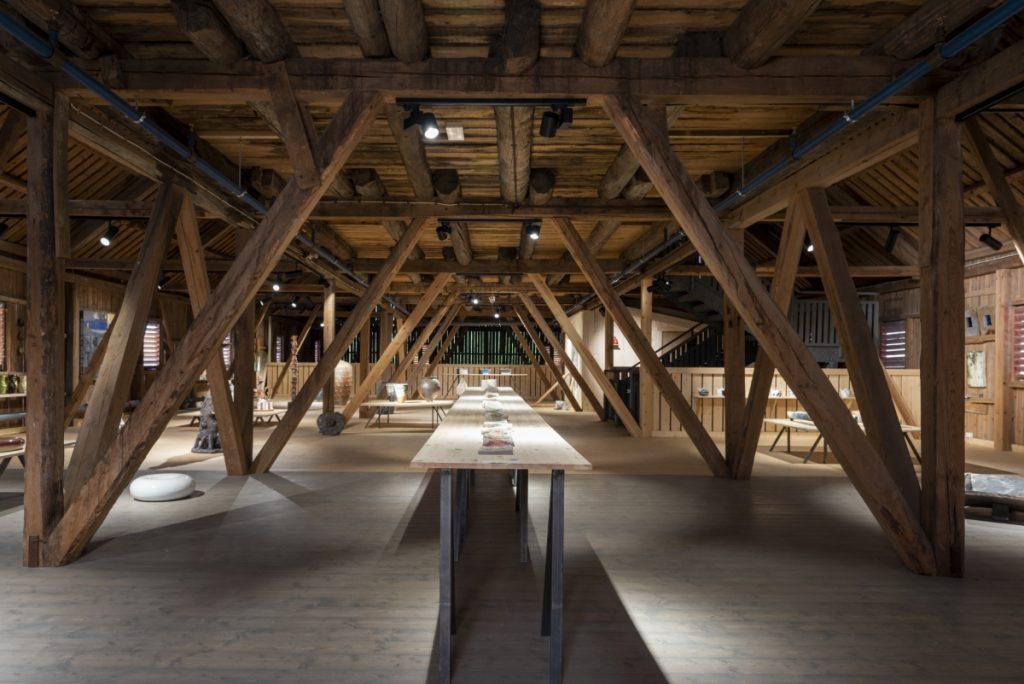
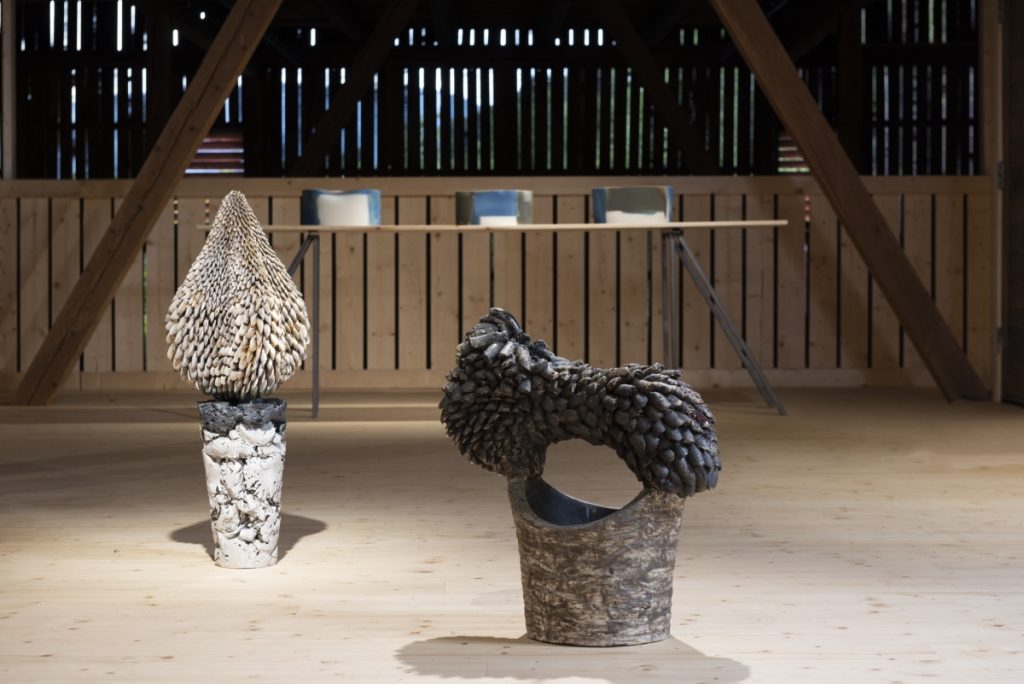
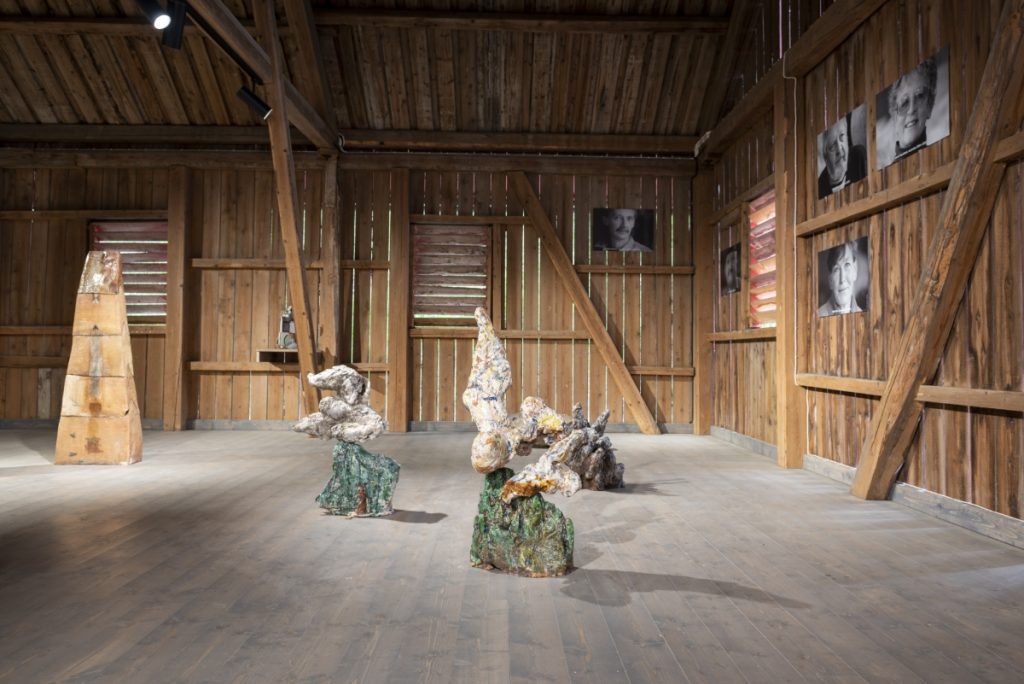
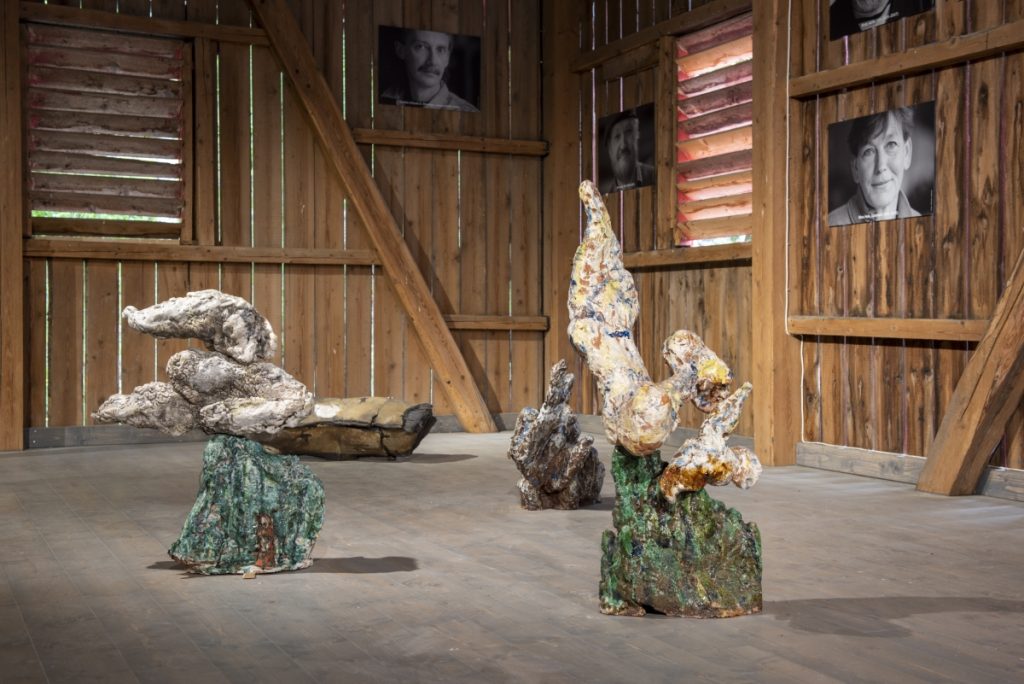
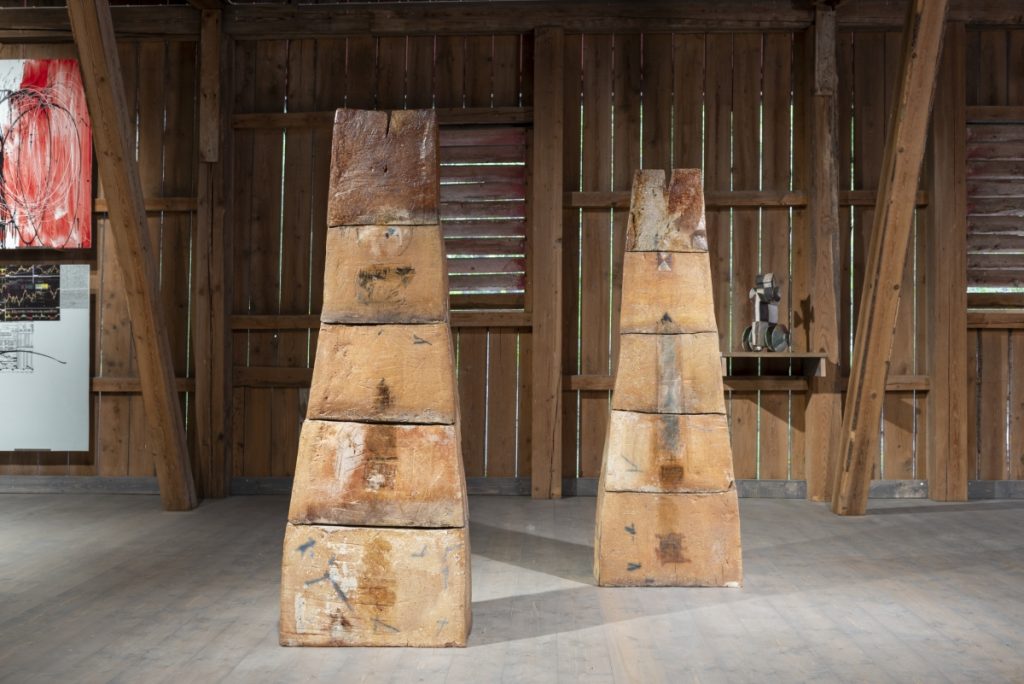
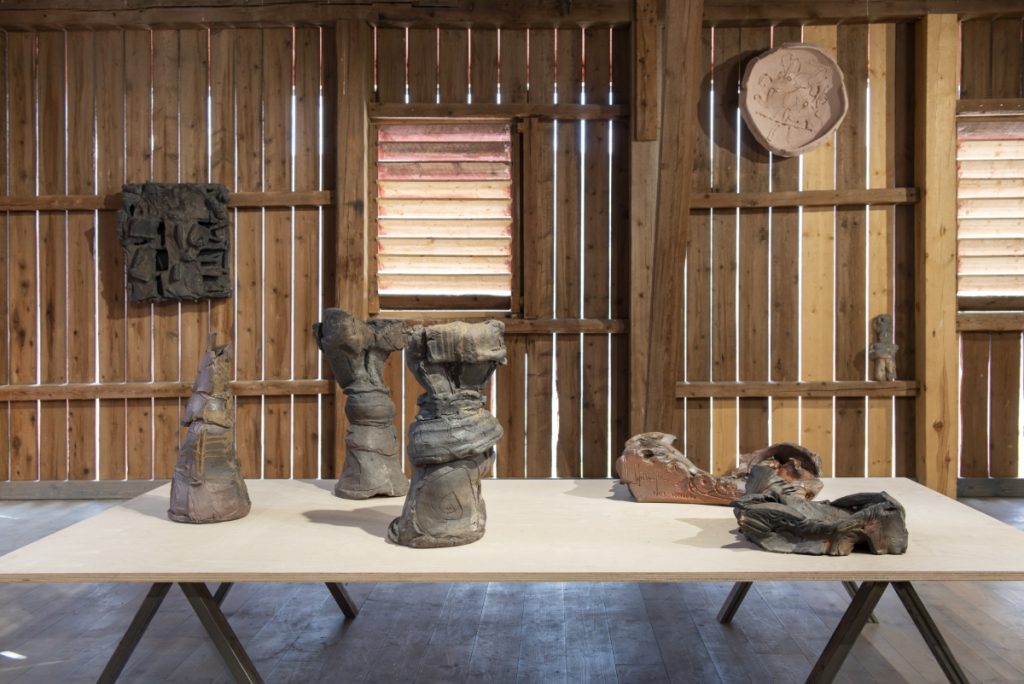
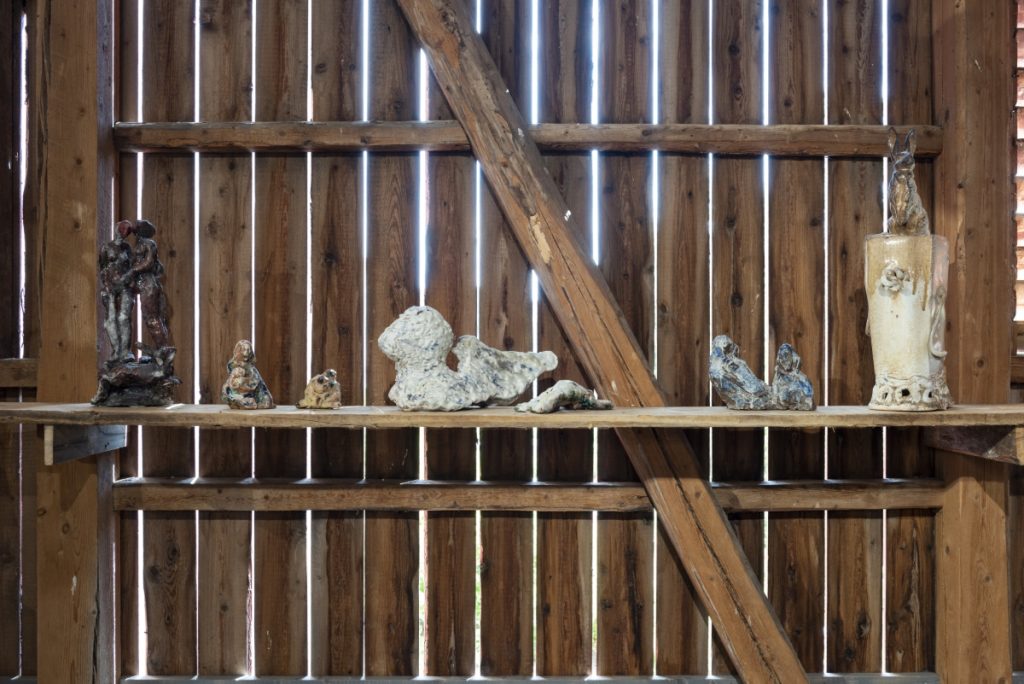
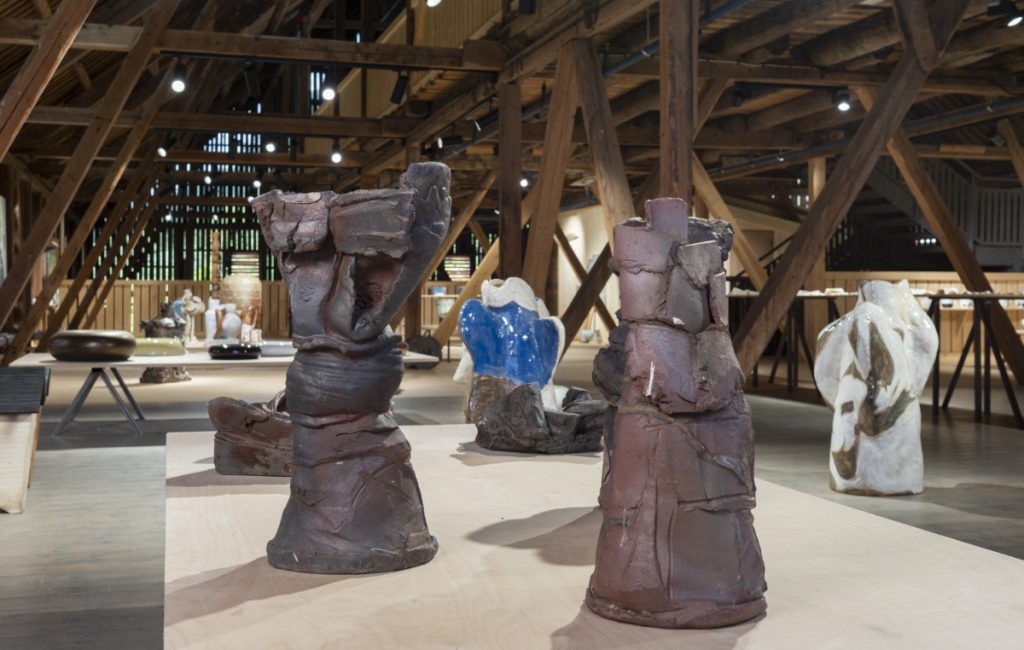
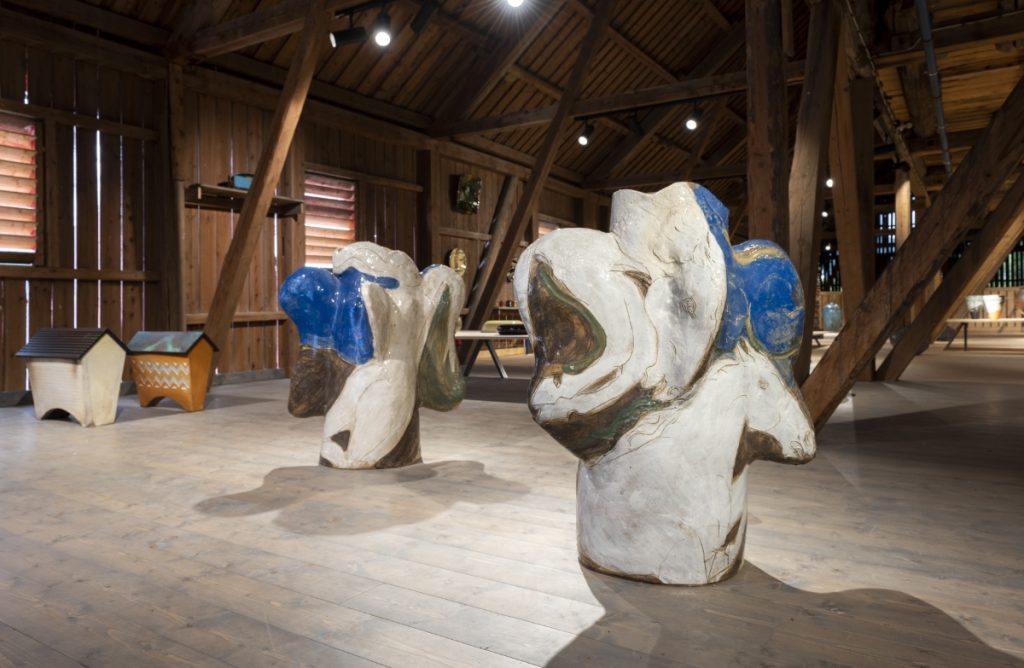
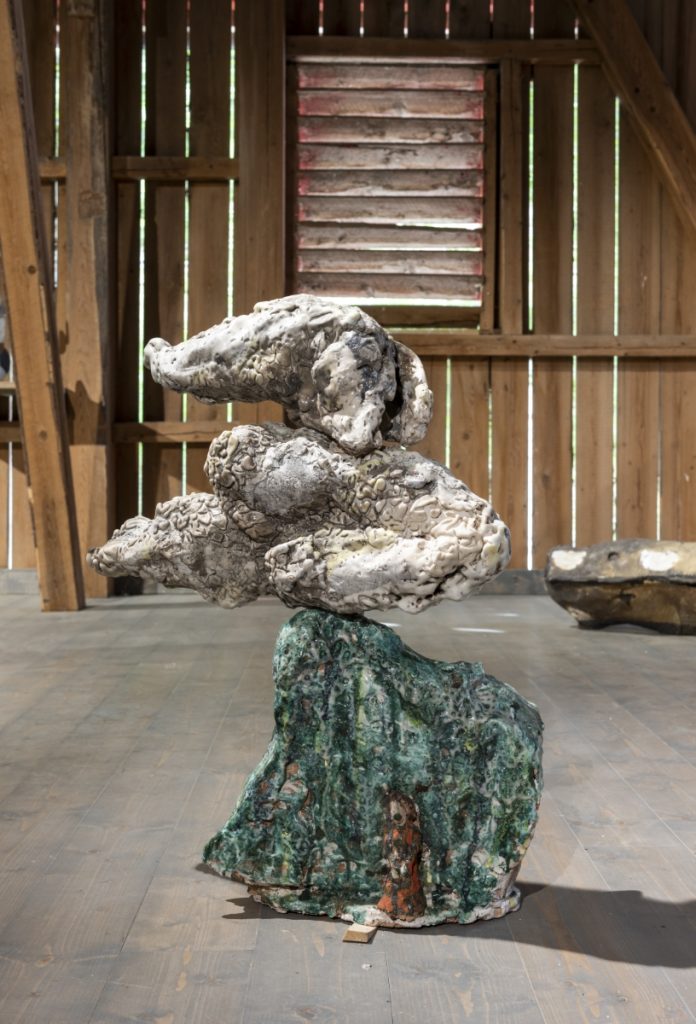
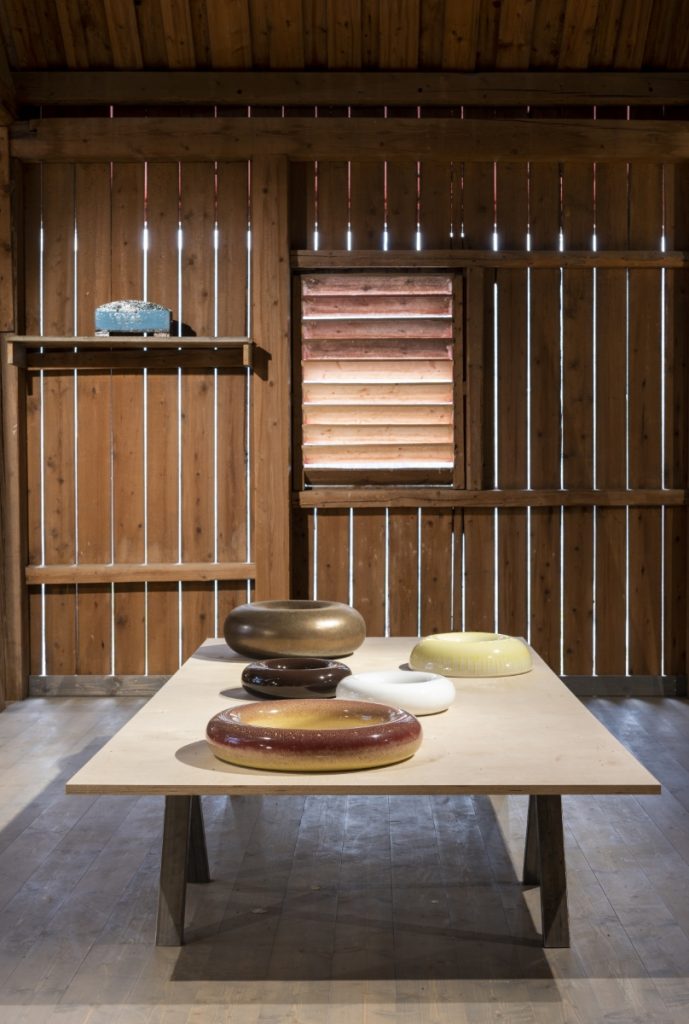
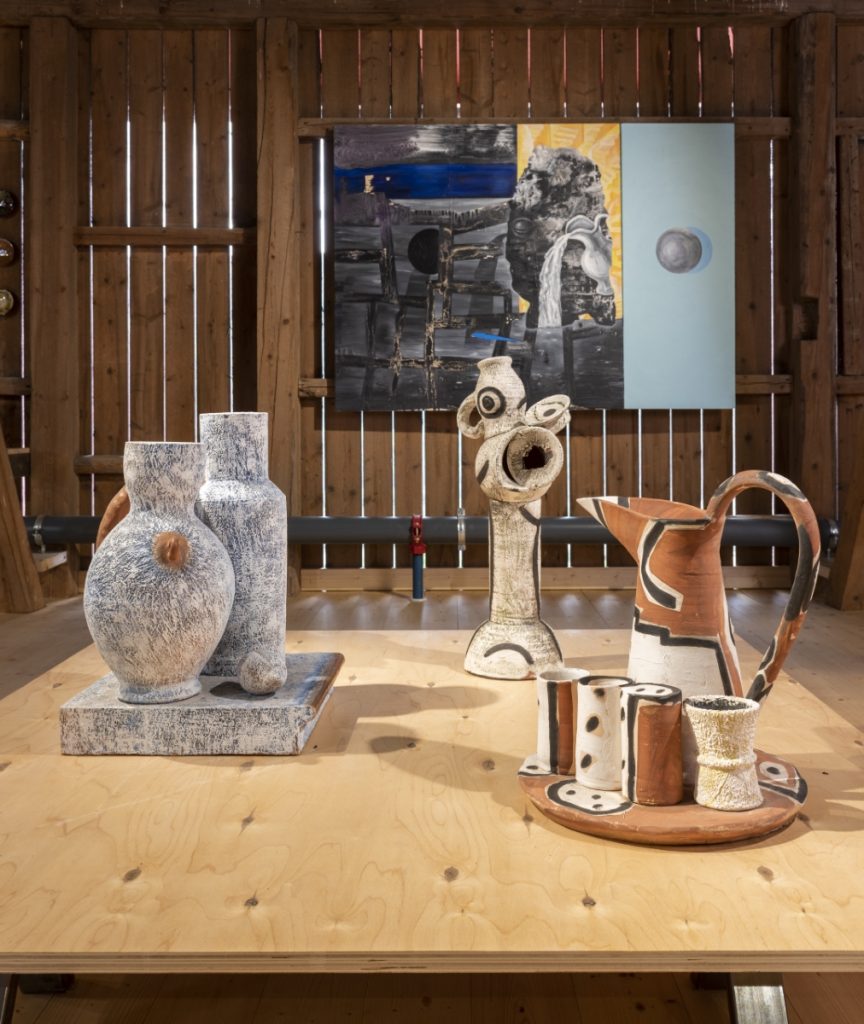
Among other objectives, the workshop aimed to create a network that individual artists could benefit from later. How has the workshop’s impact extended beyond its initial timeframe, and what influence has it had on the artistic practices of the participating artists and the public?
It was based on more direct collaboration over a longer period. In this kind of setting, I hoped that a network would arise that the individual artists would benefit from later. That has turned out to be true: Collaboration projects, exhibitions, and workshops are some of the results. But essential for me was also to show foreign artists what we in Norway were capable of because Norwegian ceramicists were perhaps lacking in self-confidence and ambition compared to the Americans; they had nothing to be ashamed of artistically, in my opinion.
In 2019, you established the Centre for Ceramic Art (CCA) in Ringebu as a permanent exhibition space and a center for dissemination activities. Could you elaborate on the journey of establishing the CCA and its role in promoting ceramic art?
The Center for Ceramic Arts is a newly established arena for innovative projects, artistic exchange, exhibitions and workshops in clay. The center came as a natural manifestation of my experience, network, and, eventually, professional position in the field.
Major events prior to the establishment of CCA – mentor projects by Torbjørn Kvasbø:
1993: The Winter Olympics project ‘Ceramics Ringebu 1993’, funded by the Lillehammer Olympic Organizing Committee.
Ten well-known international ceramicists were invited to work together with ten selected Norwegian ceramicists for five weeks at Ringebu Folk High School. This workshop could not have taken place without the big international ceramics symposium in 1990, Oslo International Ceramic Symposium, OICS. OICS was organized by Professor Arne Åse and Professor Ole Lislerud from the ceramics department at the Norwegian National Academy of Craft and Art Industry in Oslo. The symposium, attended by 500 members of the ceramics community from all over the world, was inspired by the annual (ceramics) NCECA conferences in the USA, a network in which Åse and Lislerud, their students, and Norwegian colleagues became active participants.
1993: The exhibition ‘Mestermøte’ (Meeting with a Master) in connection with the workshop ‘Ceramics Ringebu 1993’.
Norwegian and international contemporary ceramics were shown at the Lillehammer Art Museum in 1993 (ceramic art was exhibited for the first time in this Fine Art Museum), the Museum of Decorative Arts and Design in Oslo (1993), the National Museum of Decorative Arts in Trondheim (1995). This exhibition featured work by all 20 invited participants at the Winter Olympics workshop in 1993. Here, the participants showed selected works from their own studios that had been submitted in advance.
1996: The course ‘Bygging av store former’ (Building large forms) in Ringebu, as part of the Norwegian Association for Arts and Crafts further education courses in ceramics.
The sculpture project was carried out with the help of Ringebu municipality, which generously made vacant industrial premises available.
1997: Kalmar Ceramic Workshop, Sweden
In connection with the 600th anniversary of the Kalmar Union, I was invited by Kyrre Dahl, head of culture in Kalmar municipality, to produce an outdoor on-site sculpture project involving the most prominent artists in the Nordic countries, one from each country, together with 20 students from all the art academies in the Nordic region. Gudny Magnusdottir (Iceland), Pekka Paikkari, Finland, Nina Hole, Denmark, Kennet Williamsson, Sweden, Torbjørn Kvasbø, Norway.
1999: ‘Norwegian Contemporary Ceramics’ (NCC), Amsterdam, in connection with the international Ceramics Millennium Congress, on the initiative of New York gallery owner and art historian Garth Clark.
This exhibition, which presented 30 selected Norwegian ceramicists, was supported by the Ministry of Foreign Affairs and the Norwegian Association for Arts and Crafts. Individuals who contributed to NCC included curator and professor Jorunn Veiteberg and the artists Hanne Heuch, Helene Kortner, Inge Pedersen, Søren Ubisch, Gunilla Åkesson and Kari Skoe Fredriksen, at gallery Arti et Amicitiae in Amsterdam, owned and operated by a visual artist organization.
2010: ‘Le Crut et le Cuit / The Raw and the Cooked’
A presentation of Norwegian contemporary ceramics / ceramicists at Galerie Favardin & de Verneuil, Paris, France, in connection with the International Academy of Ceramics (IAC) congress in Paris. The Norwegian Association for Arts and Crafts and curators Jorunn Veiteberg and Heidi Bjørgan were collaborating partners. Supported by the Ministry of Foreign Affairs and the Norwegian Association for Arts and Crafts, among others.
2011: The project ‘Raw Clay’ in Ringebu municipality
‘Raw Clay’ took place inside and outside an industrial sandblasting hall in Ringebu. The invited artists were Alexandra Engelfriet (NL), Neil Brownsword (UK), and Katrine Køster Holst (DK/NO). Film-maker Marlou van der Berge documented the project in the film ‘Raw Material,’ which premiered at Galleri Format in Oslo in 2012. ‘Raw Clay’ was based on the same model as ‘The British Ceramic Biennial,’ where, in 2009, artist Neil Brownsword led the project ‘Marl Hole’ in Stoke-on-Trent. Alexandra Engelfriet, Pekka Paikkari, and Torbjørn Kvasbø became involved in the initiative of Brownsword and made significant contributions to the project. More information on YouTube: Marl Hole
2015: The Barn Building, Ringebu municipality
In 2015, I entered into a collaboration with Ringebu municipality. It is regulated in a memorandum of understanding stating that the Byre in the Barn Building will be upgraded to suitable premises for exhibitions and storage for works of art that belong to me.
2016: Pre-project for a masterplan for the area comprising Ringebu Vicarage and Ringebu Stave Church
Ringebu municipality purchased the barn building at Ringebu Vicarage from the Norwegian Church Endowment (OVF) in 2011. In 2016, Ringebu municipality prepared together with me a pre-project for a masterplan for the area comprising Ringebu Vicarage and Ringebu Stave Church. A ceramics artist-in-residence programme was one of the main elements of the pre-project. The pre-project was carried out in 2016 with support from Oppland County Authority. The barn building at Ringebu Vicarage was to be upgraded to function as a permanent exhibition space for ceramic art and a center for dissemination activities. In addition to a 120 m2 Monumental Ceramic Studio offering a year-round artist-in-residence program, The Centre for Ceramic Art disposes of 600 m2 of exhibition space and four floors with ceramic activity.
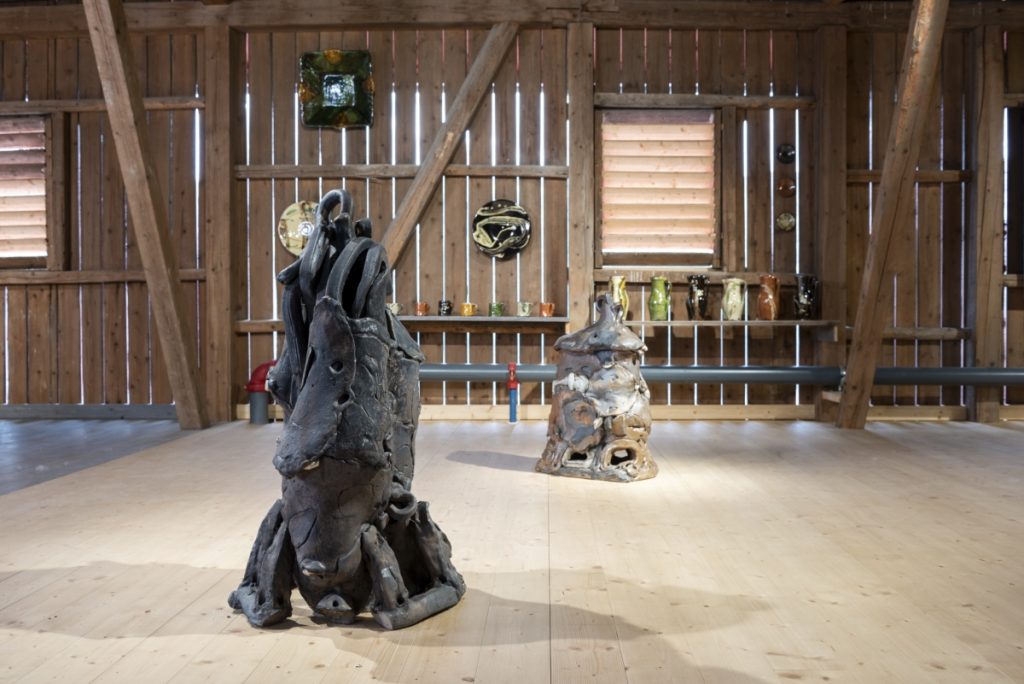
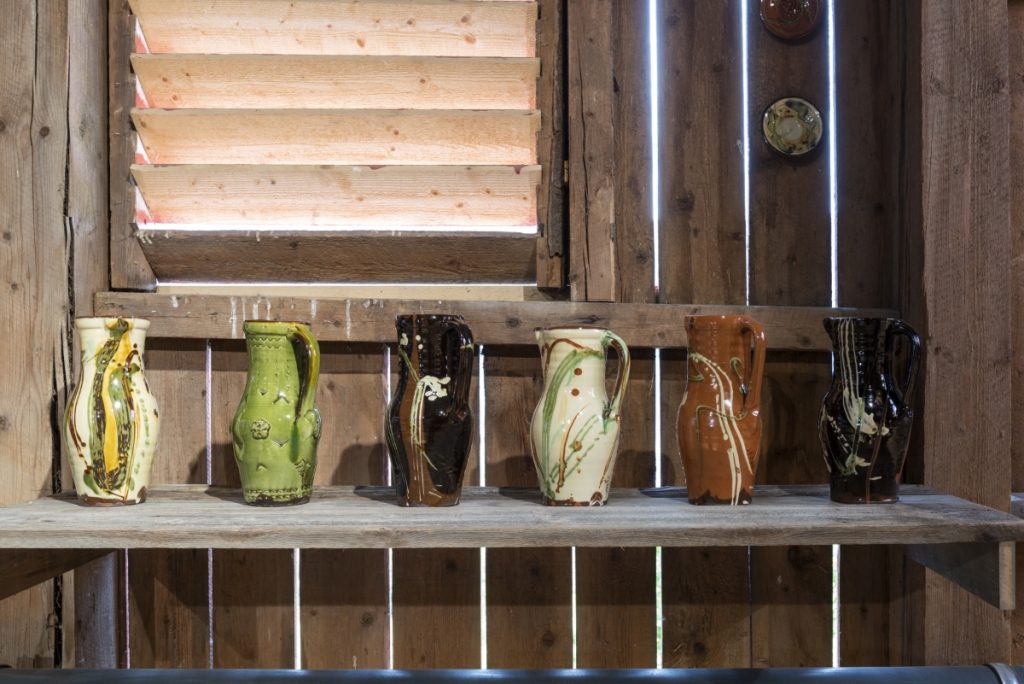
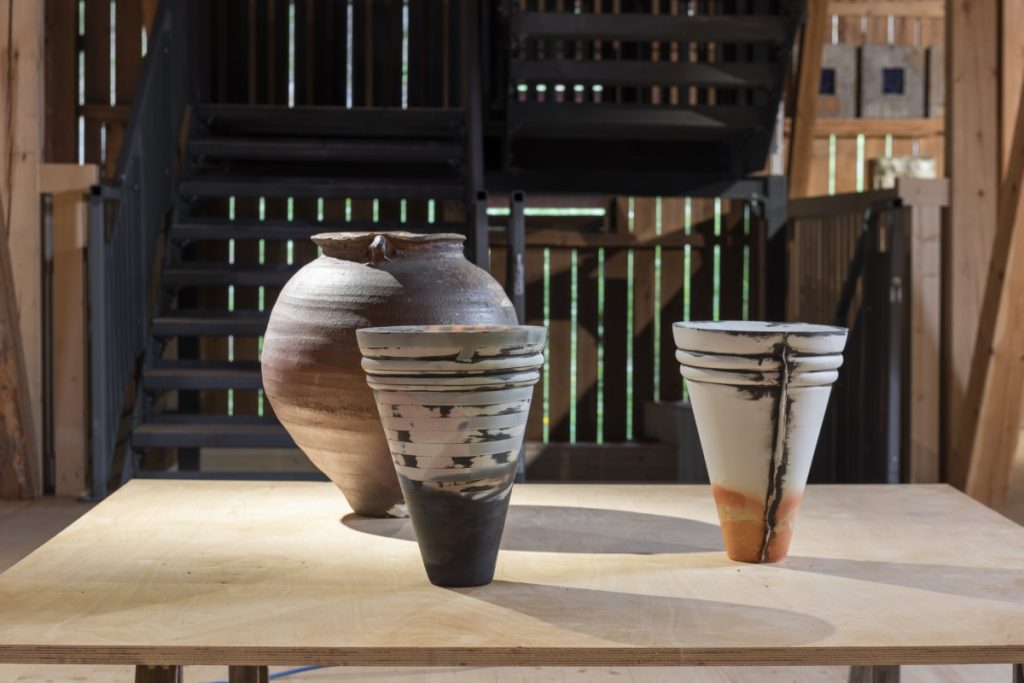
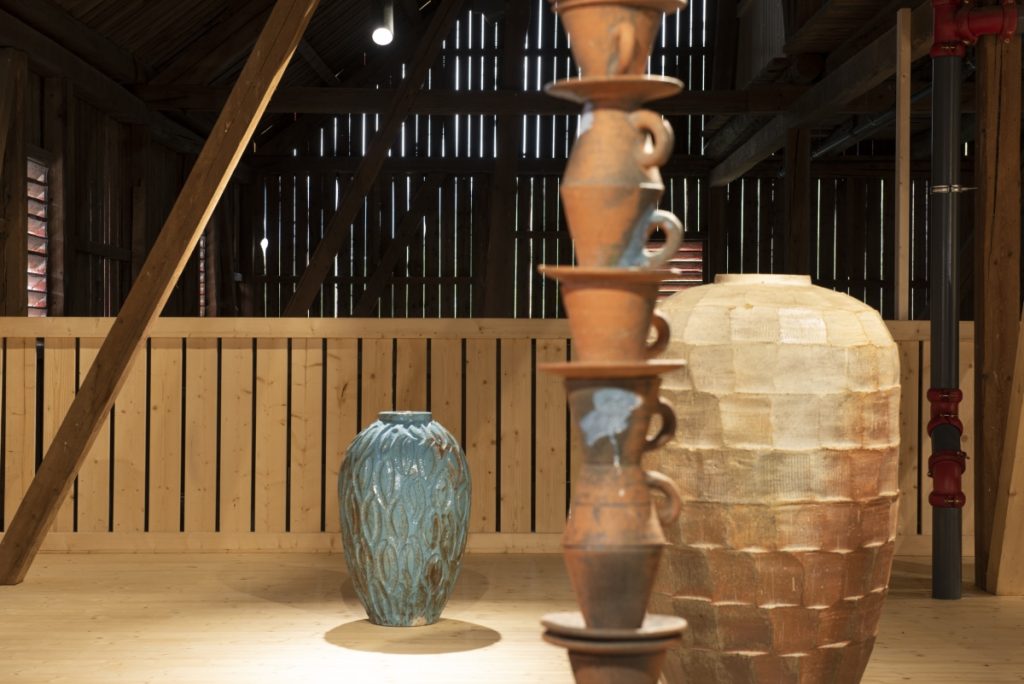
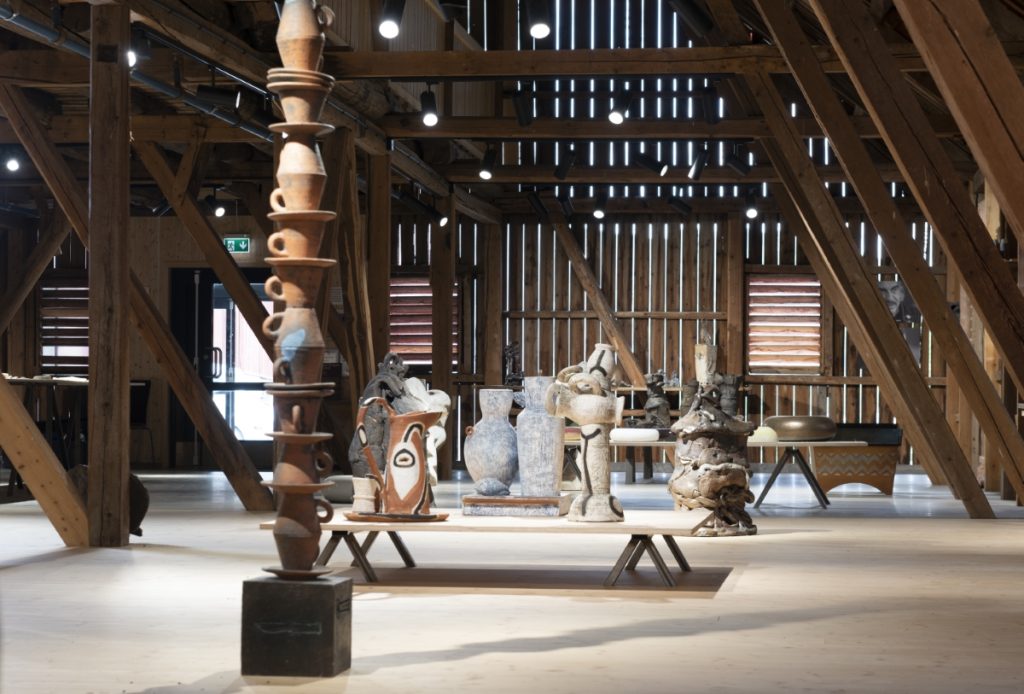
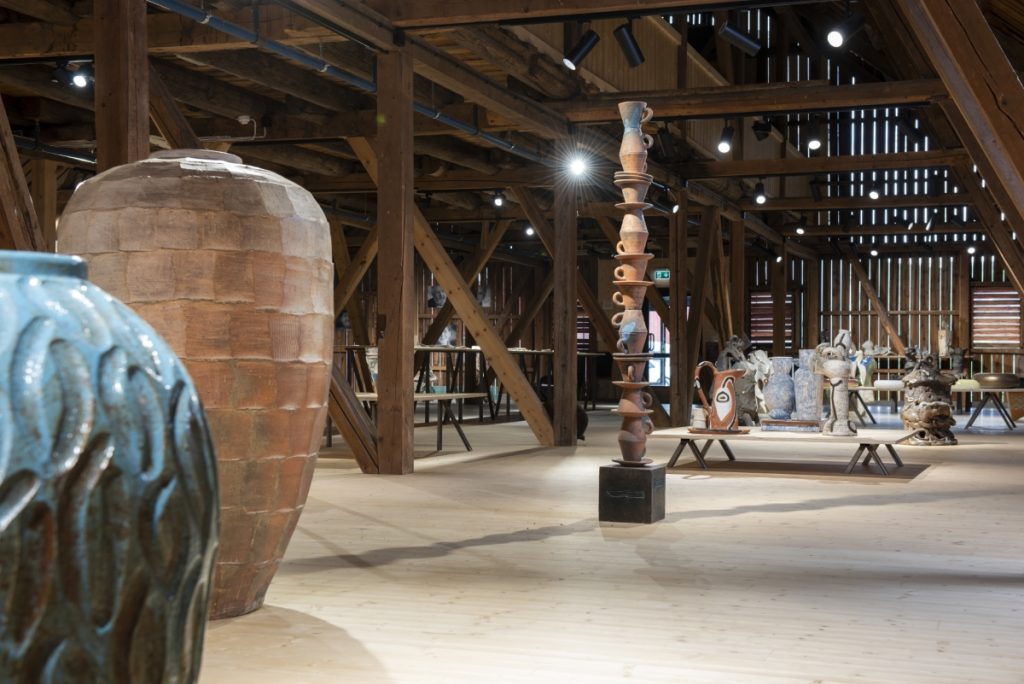
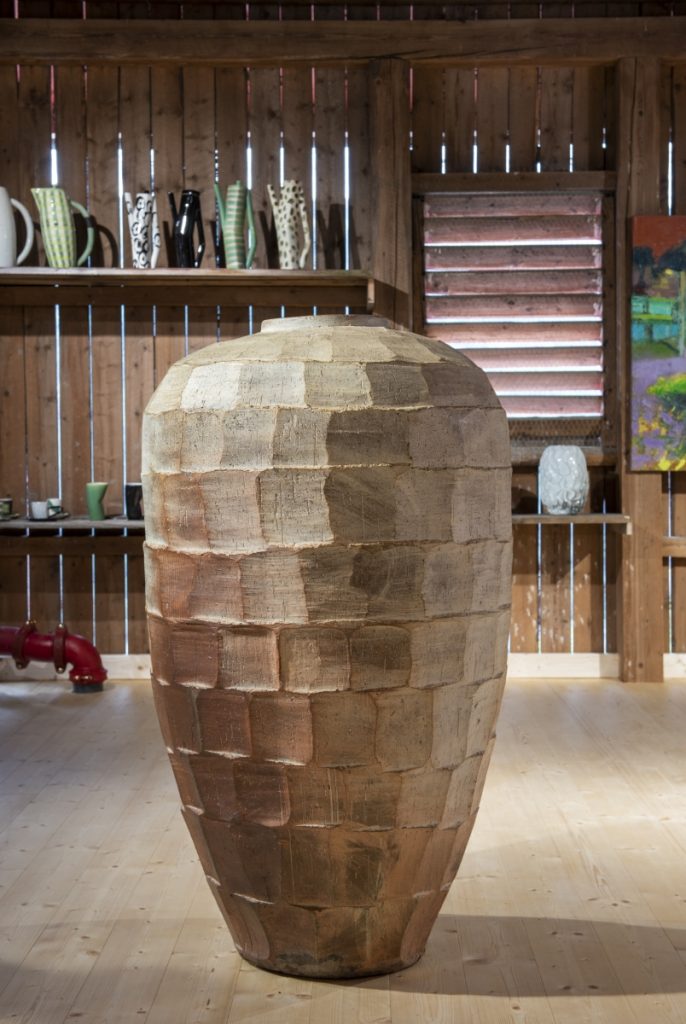
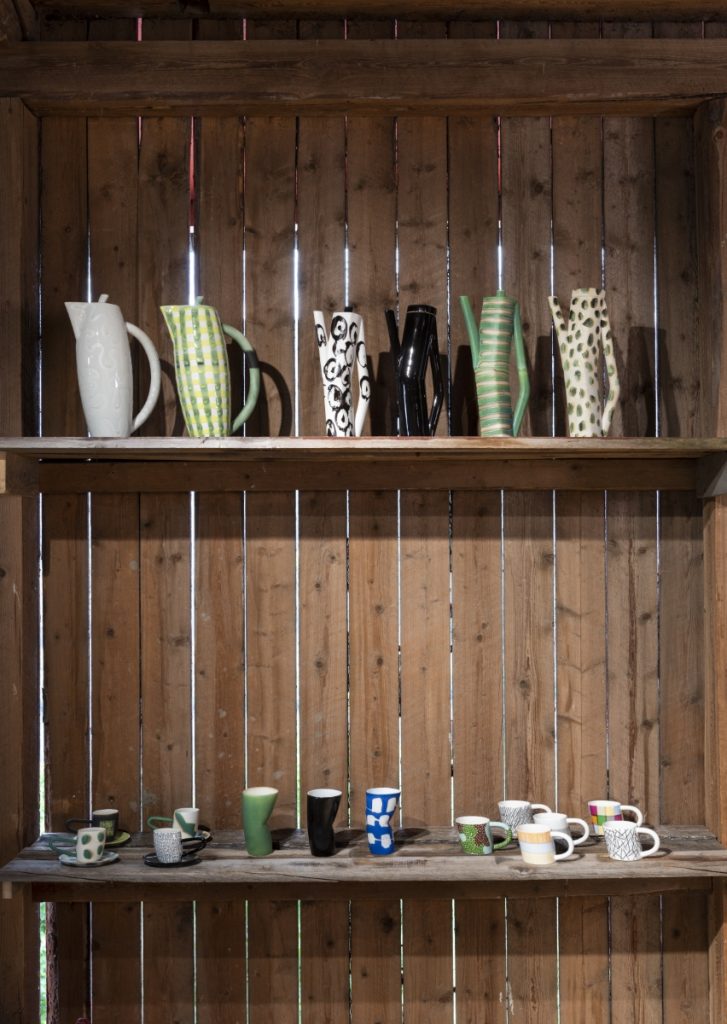
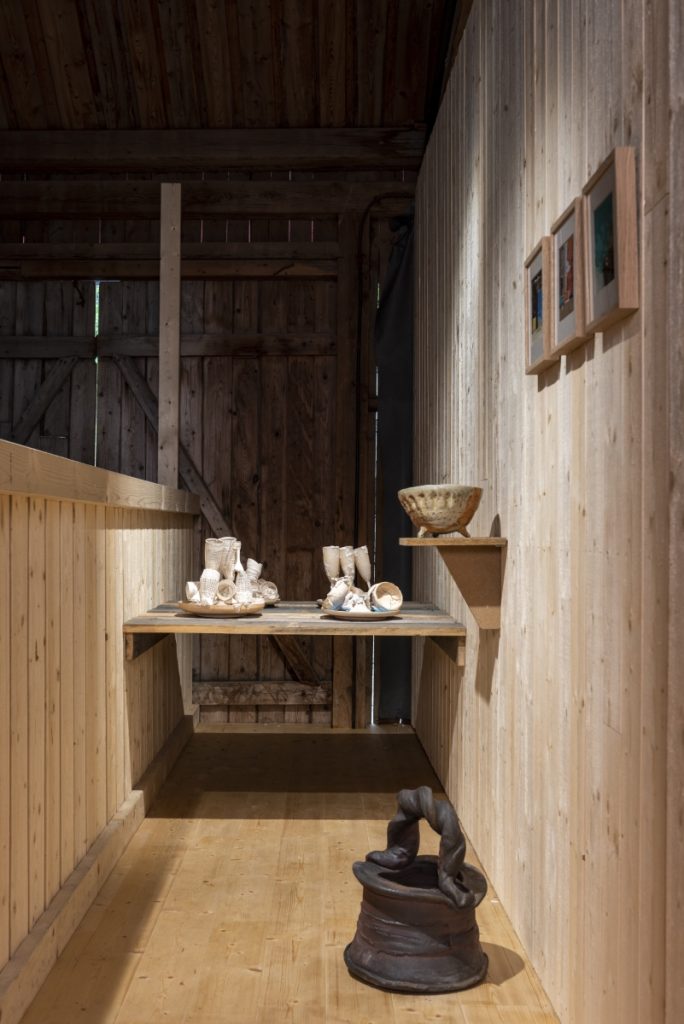
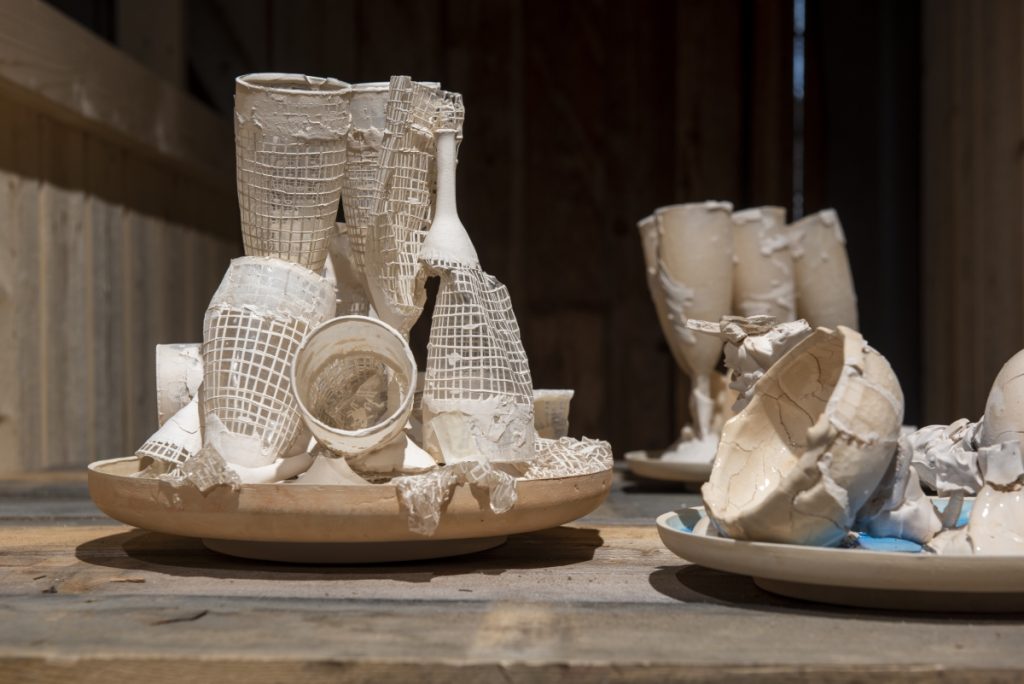
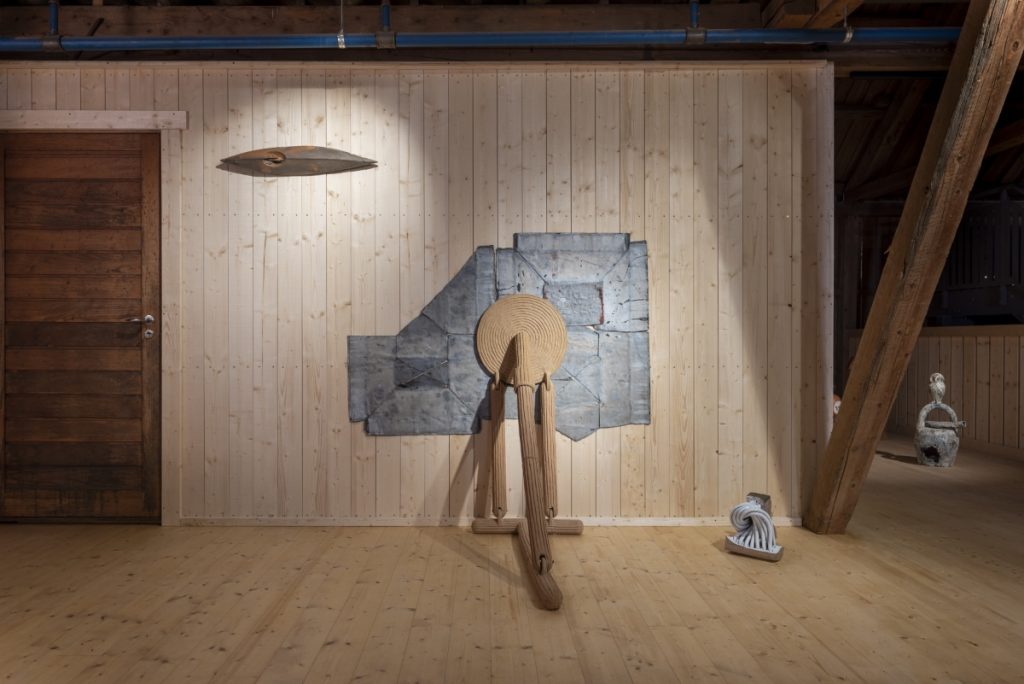
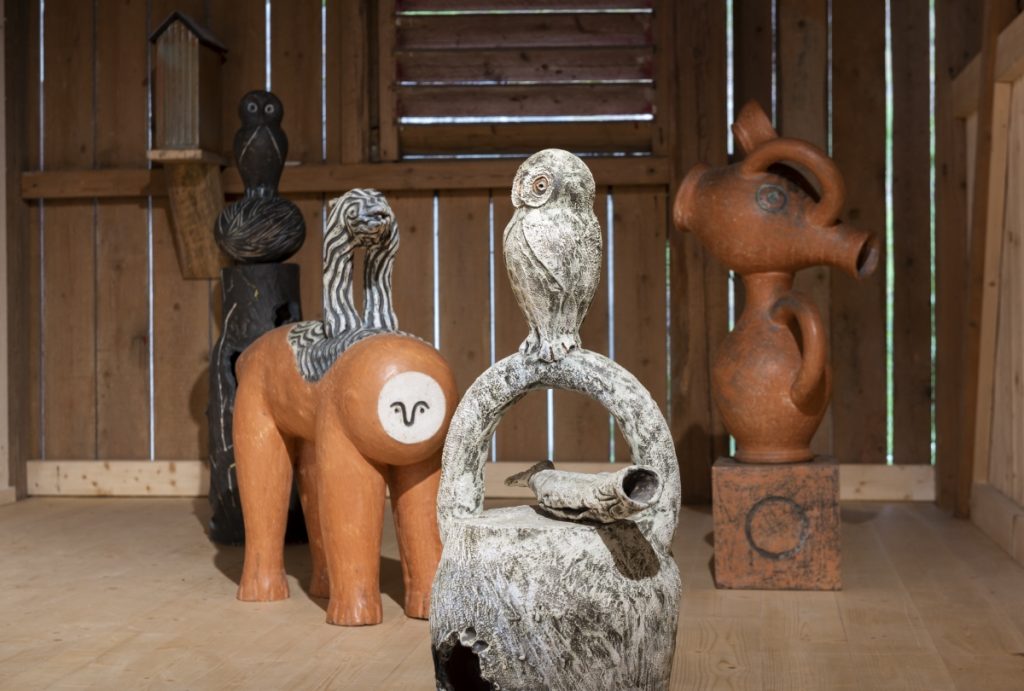
The current exhibition, “Ceramics Ringebu 1993-2023,” reflects on the developments that have taken place in the 30 years since the Winter Olympics Workshop. How does this exhibition capture the trend-setting nature of the meeting between Norwegian ceramicists and international giants in 1993? What can visitors expect to experience through historical & contemporary artworks?
Seven of the participants from 1993 are dead (Harald Solberg, NO, Peter Voulkos, USA, Rudy Autio, USA, Chuck Wissinger, USA, Nina Hole, DK, Janet Mansfield, AU, Jim Leedy, USA). They left behind donated works they made during the weeks at Ringebu in 1993. It’s a unique collection I have taken care of, and it is being shown this summer for the first time.
What should we call ceramic work that has no practical use? That was the question Norway’s National Broadcaster, NRK, asked at the beginning of its report from the international ceramics workshop at Ringebu in 1993, which, 30 years later, is being marked by an exhibition at the Centre for Ceramic Art. The NRK story was broadcast as part of the arts programme Kulturoperatørene on 22 September 1993.
The question can be taken as an indication that things were changing in the ceramic scene in Norway. This change was about ceramicists’ self-perception, their position in relation to the arts in general, and their artistic ambitions. ‘Why are 90% of all ceramics made in a “homely size” of less than 15 kilos and measure 30 x 30 x 30 cm?’ I asked in the craft journal Kunsthåndverk in 1993. In the USA, I met ceramicists who challenged such conventional thinking. They made ceramics that were more like sculptures than utility objects and were characterized more by deconstruction than decoration. As Jim Leedy (1929–2021) told me at Ringebu, for him and his colleague Peter Voulkos (1924–2002), a jar was essentially a point of departure for creating sculpture. And, for that reason, he called himself neither a potter nor a ceramicist: ‘I call myself an artist who works in clay.’ Today, it is easy to smirk at such hair-splitting, but in the early 1990s, there was a lot of debate in Norwegian ceramic circles about what to call something that was so far from the traditional values of pottery.
The workshop in Ringebu could be criticized for being male-dominated, emphasizing large and heavy ceramics. How do you respond to this critique, and does the exhibition address and showcase the diverse range of artistic expressions within ceramics, including smaller-scale works and alternative approaches?
It’s a document of its time and wouldn’t have happened today. It reflects some of the strongest ideals I had at the time. There was a much stronger hero worship; we had role models that we aspired to. It also reflects the information we had internationally at that time, who got the most space in publications. Monumentality was, and maybe still is, masculinity-coded in art. There was, or is, also a tendency to equate scale with value. It is now as natural to recognize and value how demanding it is to convey power through work on a smaller scale. In hindsight, I understand the criticism and have no need to defend myself. It was my project, my selection based on my experience and what and who I thought was important at the time. In addition to being significant artists, several participants were active in several ways within the ceramic network, such as editors of ceramic magazines, producers of residencies, professors, and heads of ceramics departments. This was before we had the internet and social media, and access to information was different than it is now.
It was essential for me through this project to make sure that the dissemination of information was diversified through the participants and maximized. We only had what was presented through ceramic magazines and what we happened to see of these, usually at the ceramics departments at the craft schools in Oslo and Bergen since few of us could afford to subscribe to them. We rarely saw exhibition catalogs, for example.
Norwegian ceramics has undergone significant changes since the workshop in 1993, including internationalization. In what ways have these changes shaped the field, and how does the exhibition at Ringebu reflect and embody the modern trends that have emerged?
Internationalization is a keyword in that context. These changes have a lot to do with what has happened within education. In Norway, you can study ceramics at the art academies in Oslo and Bergen. Students come from all over the world, meaning a much more diverse environment. The study programs have a strong focus on interdisciplinarity and theory nowadays. They don’t read Bernhard Leach’s “A Potter’s Book” as we did in my student days, and the studio craft movement is no longer a significant reference. It is the general art world that students are informed about, and their identity is as artists more than a ceramicist or craft person. In the exhibition, you can see that the younger generations don’t use the vessel or other references from the history of ceramics but are making sculptural or conceptual works about contemporary issues of different kinds. Many art fairs and biennials have now opened for ceramics, and several Norwegian ceramicists are represented in galleries abroad. Norwegian Crafts, which started in 2012, also endeavors to strengthen Norwegian craft’s position internationally through exhibitions, publications, seminars, and visiting programs. The most significant difference is, nonetheless, the access to information and contact offered by the internet and social media. Network Society was an unknown concept in 1993, but it is now the reality we all live in.
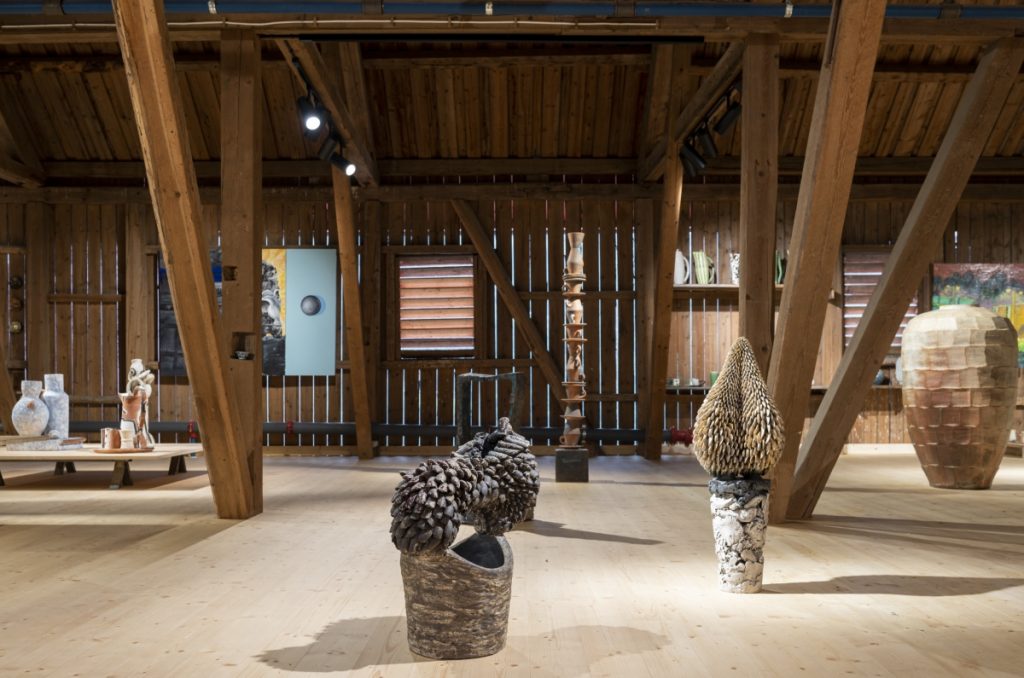
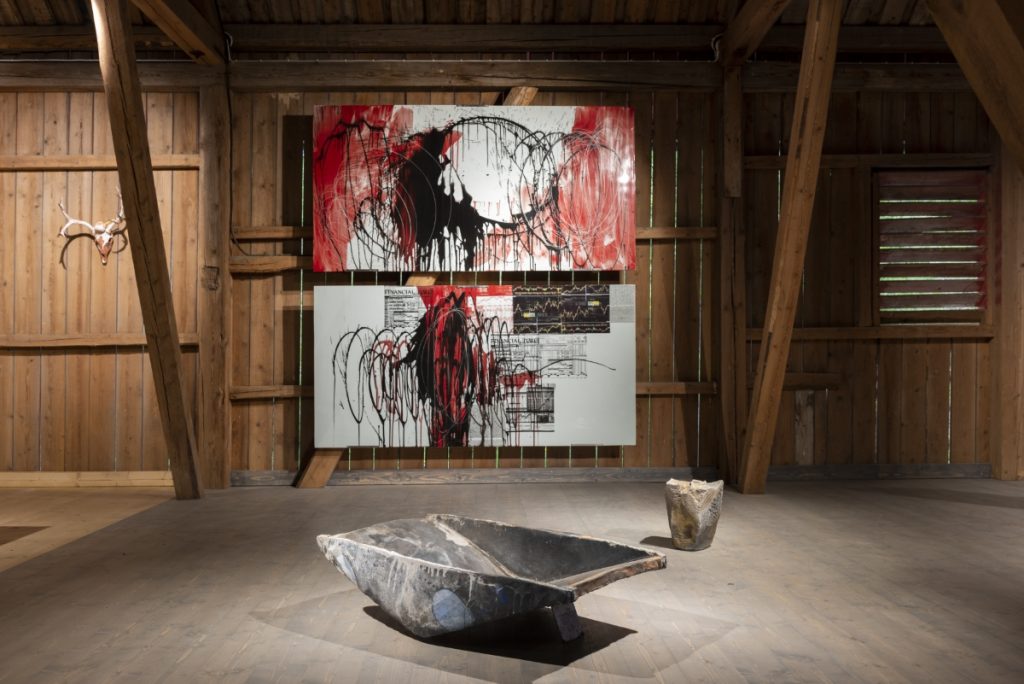
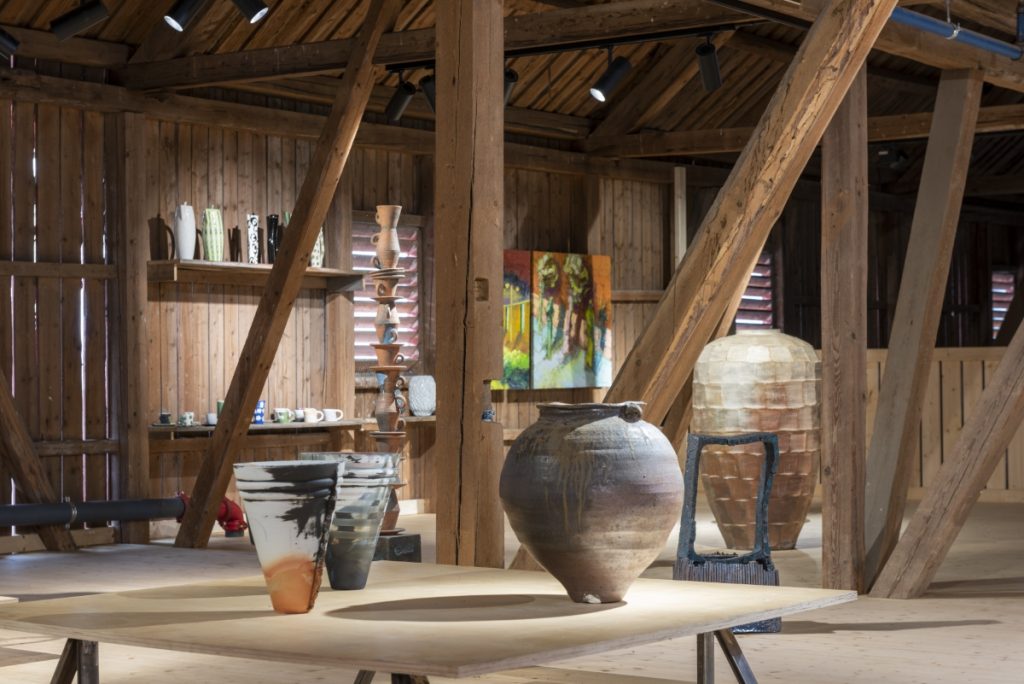
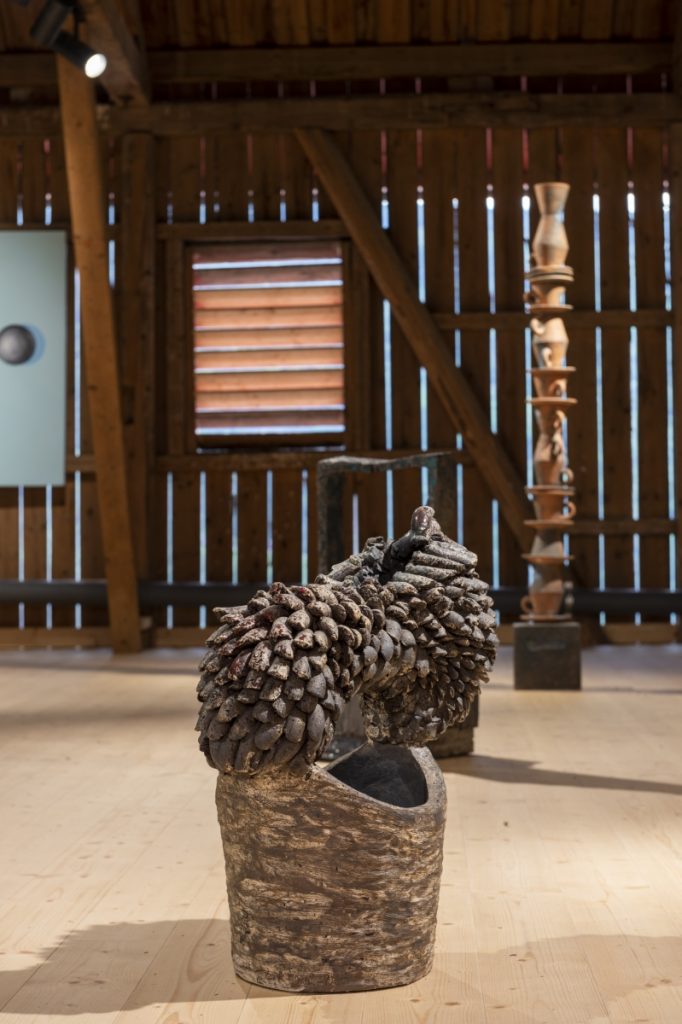
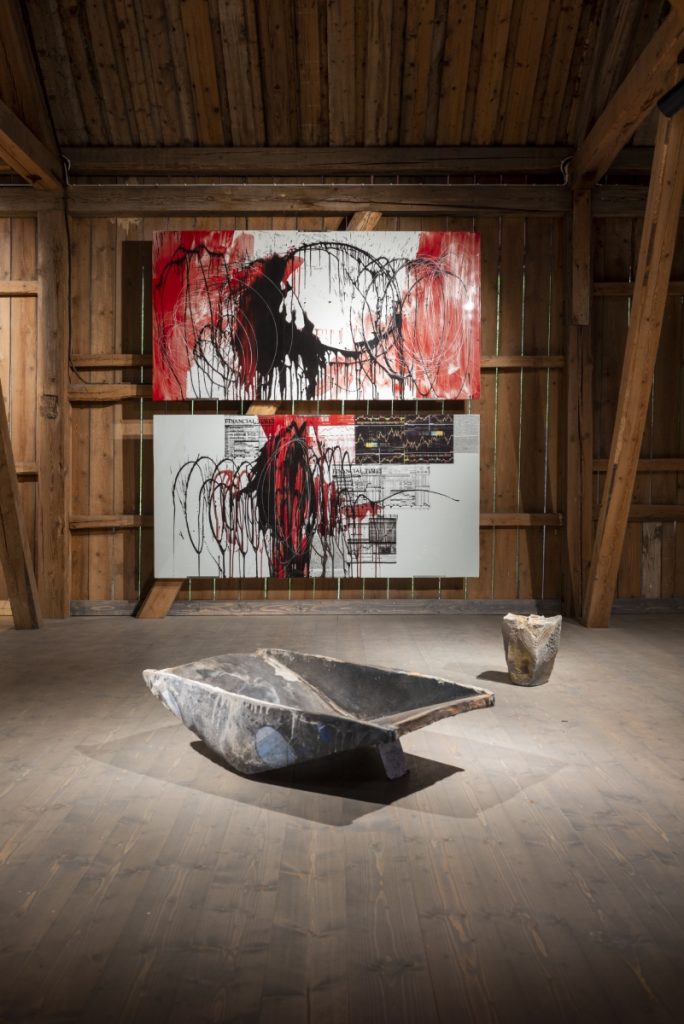
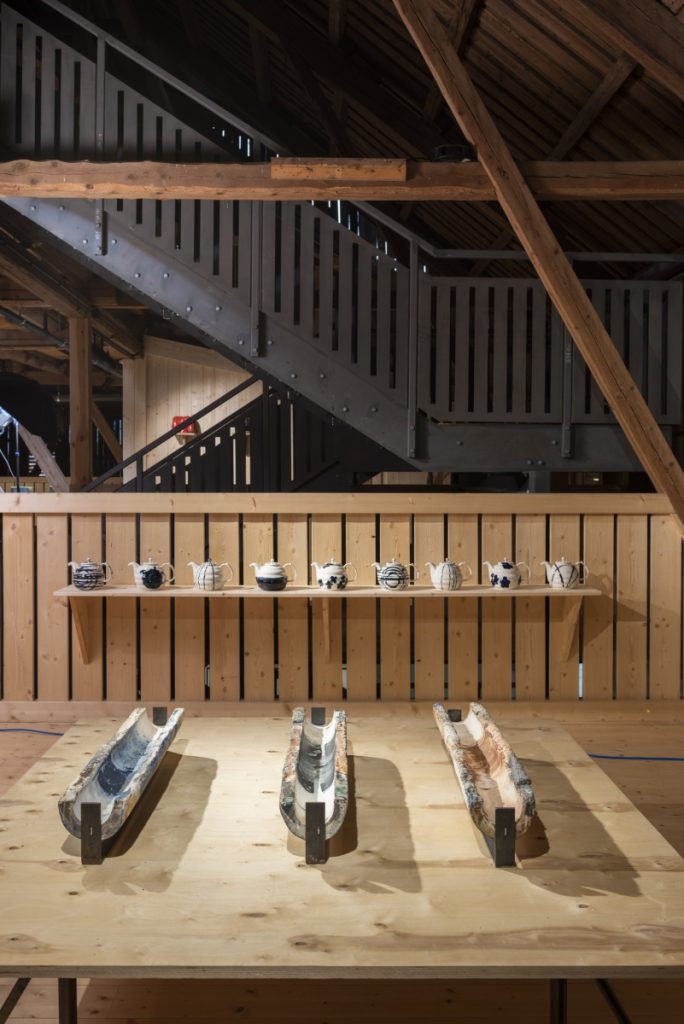
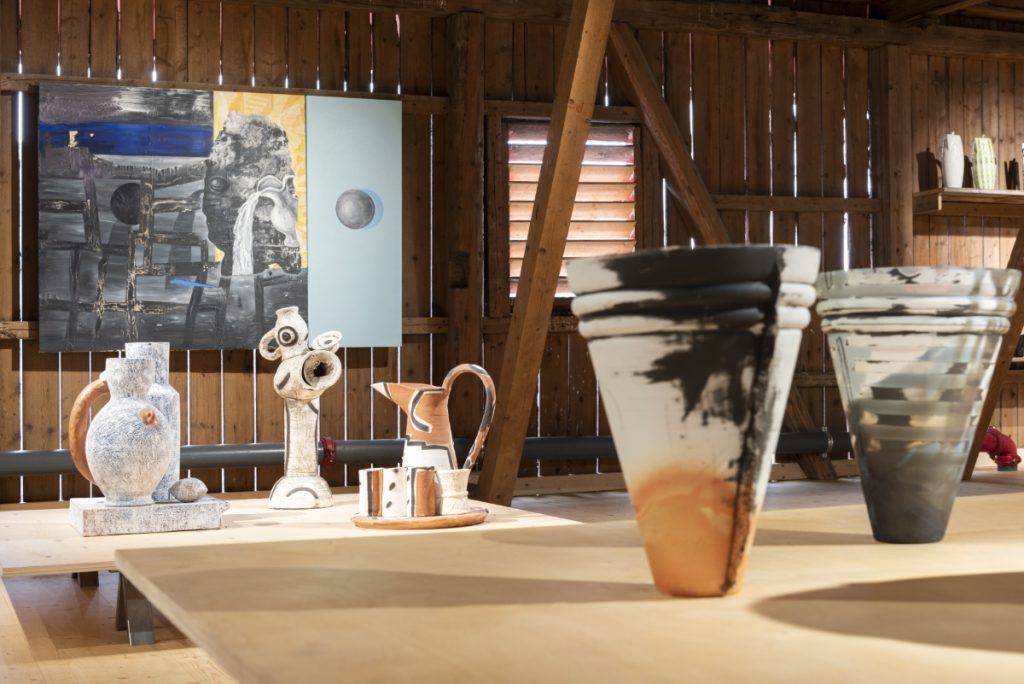
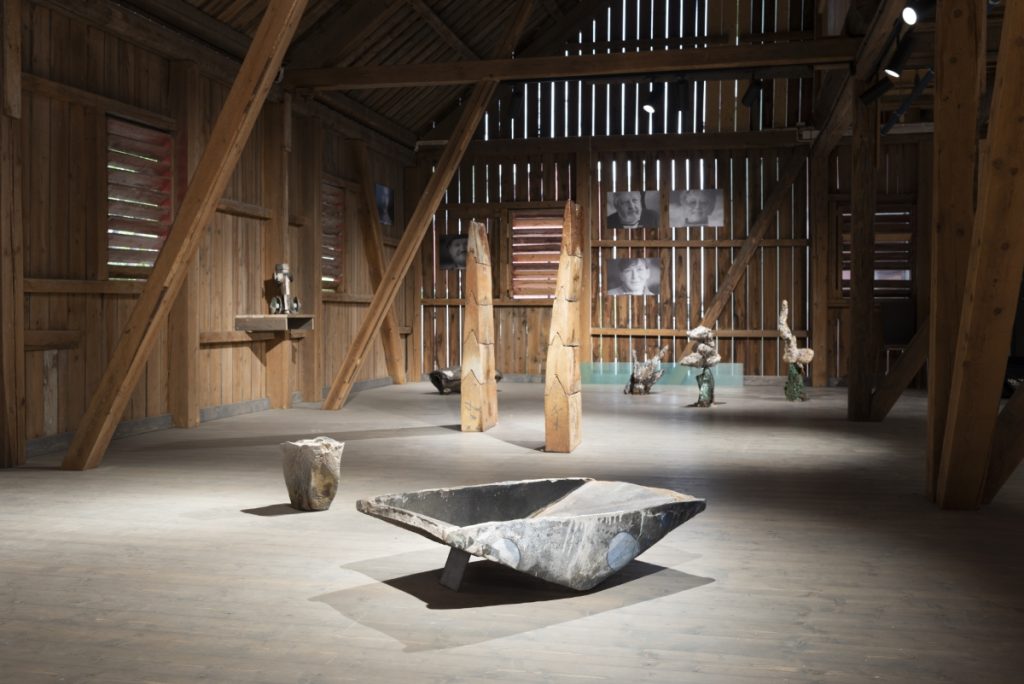
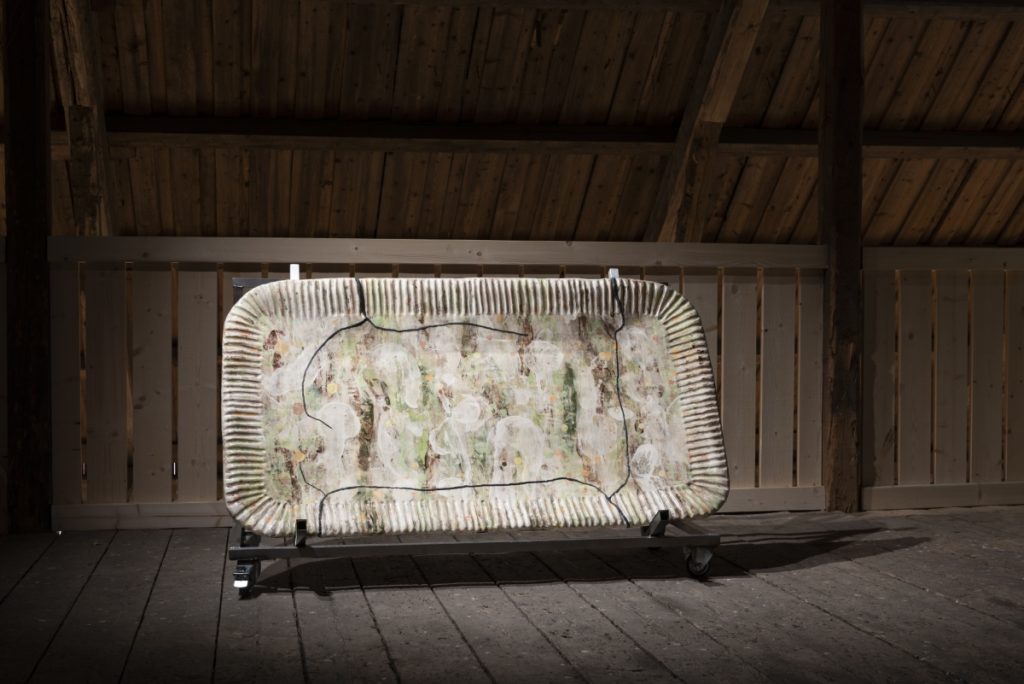
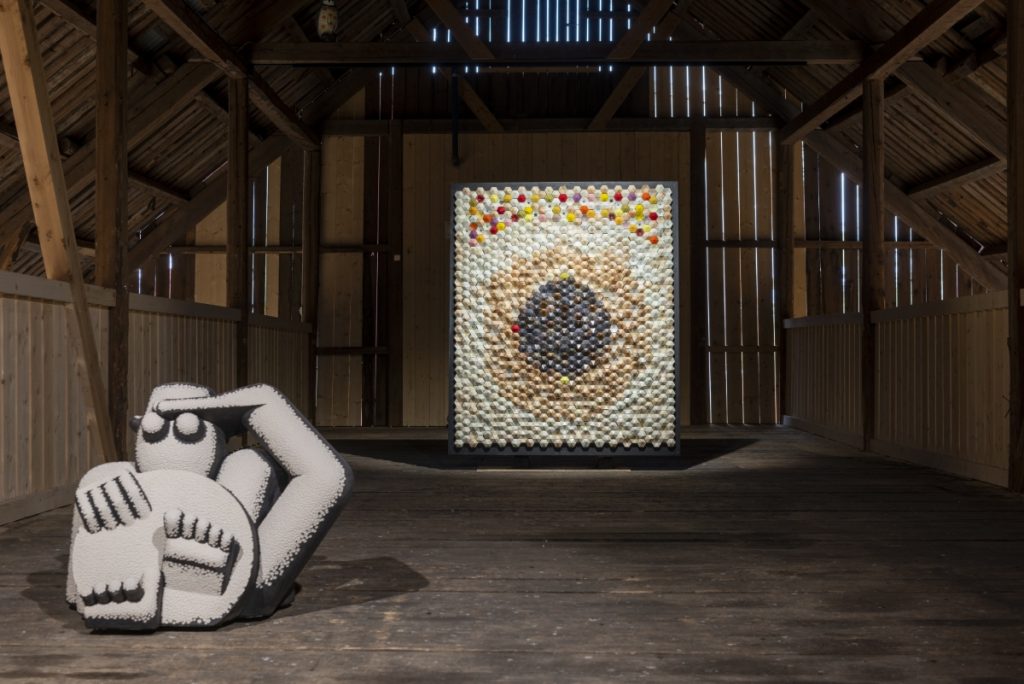
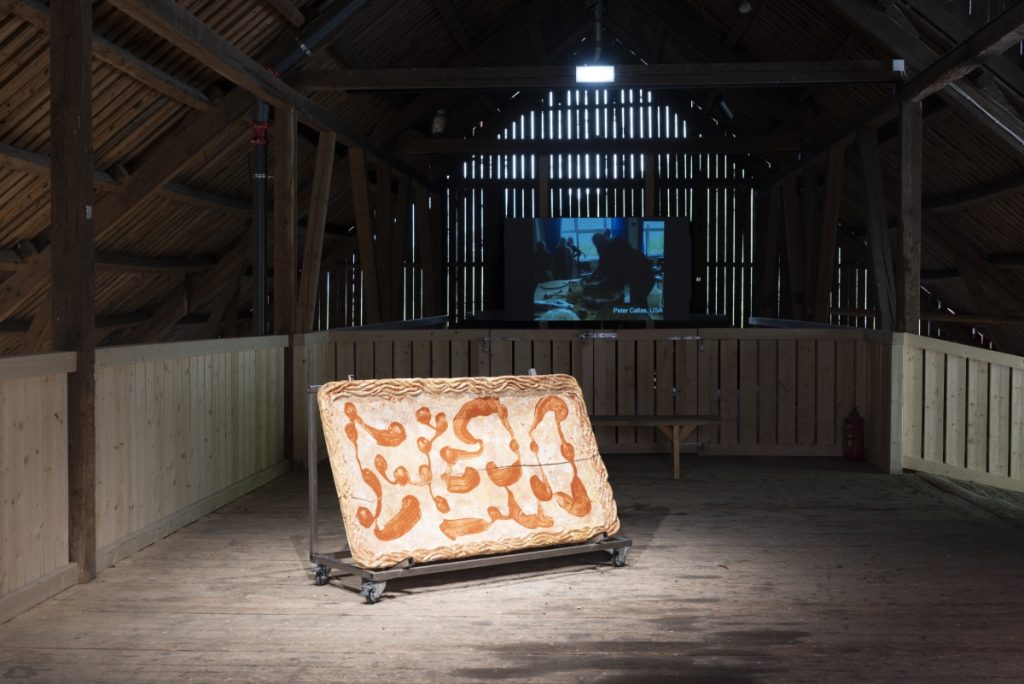
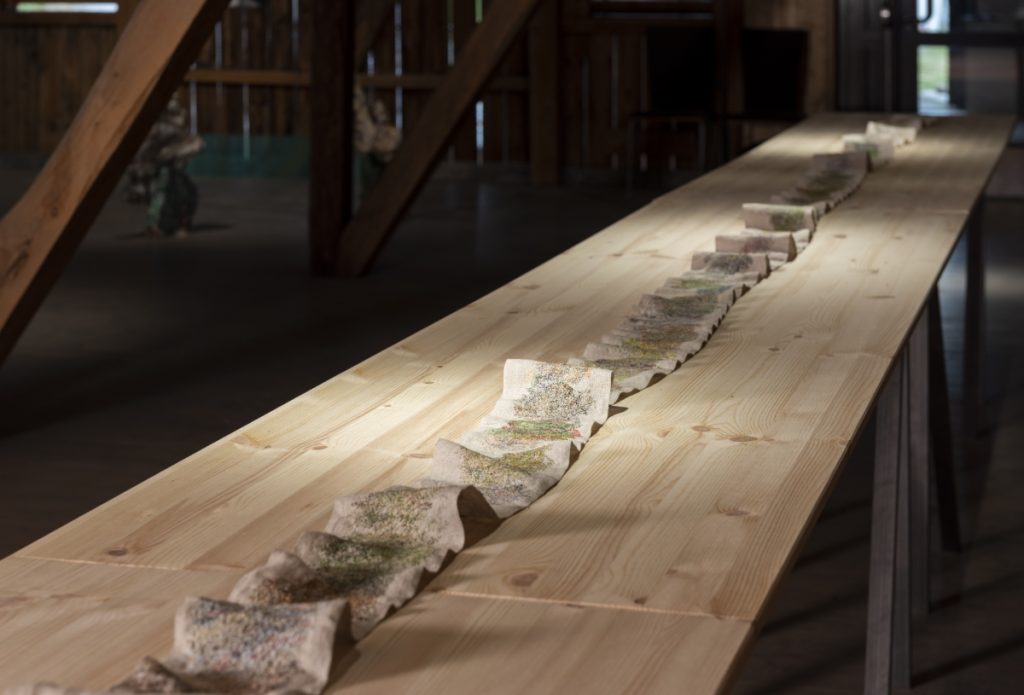
Ceramics Ringebu 1993-2023 also explores the accessibility of ceramics as a medium, welcoming many types of artists and styles. How does the exhibition embrace the versatility of ceramics and create a space for dialogue between different artistic practices?
The starting point for the 30th-anniversary exhibition is that all participants, all ceramicists from 1993, including the student assistants, are invited to exhibit together again.
In the summer of 2023, the exhibition at Ringebu offers an opportunity to both look back and take stock of the current status. It is interesting to see what kind of ceramics the artists who took part in the intense weeks of work 30 years ago are making today, large and small works, utility objects and sculptures, visual art and craft: Ceramics has room for them all. Thirty years later, the curation done by Ingunn Svanes Almedal and I is about showing what has happened to each of them during these years. All show works from 1993 and the most recent works from the 2020s.
Development through sharing. CCA in Ringebu offers many opportunities for established practitioners and newly trained ceramicists to come together and share impulses and knowledge. The importance of my artistic network to the Centre for Ceramic Art cannot be exaggerated. With an extensive background in international collaboration, exhibitions, gatherings, conferences and workshops, my focus has been on artist-driven renewal and on developing ceramics, but also on collaboration across continents. It may sound like a correct thing to say, but a culture for sharing, hard work and perseverance really are the key to understanding how individual practitioners and the community as a whole have acquired a high level of skills and knowledge through collective processes.
The artistic infrastructure has already been built over many years of individual practice and collective networks that have matured the Centre’s activities through the facilities it offers today. One significant difference between the Centre for Ceramic Art and other large shared ceramic studios and centers it is natural to compare it with is that great emphasis is put on CCA being artist-run. It reflects many of the most essential undercurrents in ceramics in the last 50 years.
The vicarages (the houses in which vicars live, Ed.) have had a major impact on the development of Norwegian public education, agriculture and building customs. They have been, and are today, the center of power for a versatile cultural enterprise.
Knowledge and teaching were important. Through the operating income, the farms helped to finance the start of higher education in Norway. Prestegården (the Vicarage) was a place of news, impulses, and, for many, a “window to the world” outside the village. In this way, the parsonages played an absolutely central role in many local communities. The vicarages tell an essential story about the people and the village, about the region and the part of the country. The parsonages are historical, cultural carriers that must be protected through continued use.
And here we, the CCA, stand, in the middle of the most important building in our cultural landscape, in the cathedral of agriculture, the red barn.
The exhibition rooms, Trevet and Kjøringa, are traditional Norwegian barn architecture with a completely open wooden beam construction, where all building elements have either a load-bearing or a supported function. This places great demands on the installation of the exhibition, where it is important to cooperate with the rooms as much as possible. There is a close and organic interplay between the architecture and the objects on display, where the space and architecture are utilized for all it is worth. This is a space where the white plinth, visual art’s traditional and alienating way of emphasizing itself and creating distance, does not work at all.
Thus, the diversity is self-evident.
A special thanks to the group around CCA, and this exhibition, Ingunn Svanes Almedal, Kari Sund, Nina Standerholen, Brage Kvasbø, Trude Westby Nordmark, and Marita Eri Mo.
Torbjørn Kvasbø, July 2023
Visit the Centre for Ceramic Art (CCA)’s website and Instagram page.
Visit Torbjørn Kvasbø’s website.
Interview by Vasi Hirdo, publisher & editor of Ceramics Now
Photos by Thomas Tveter


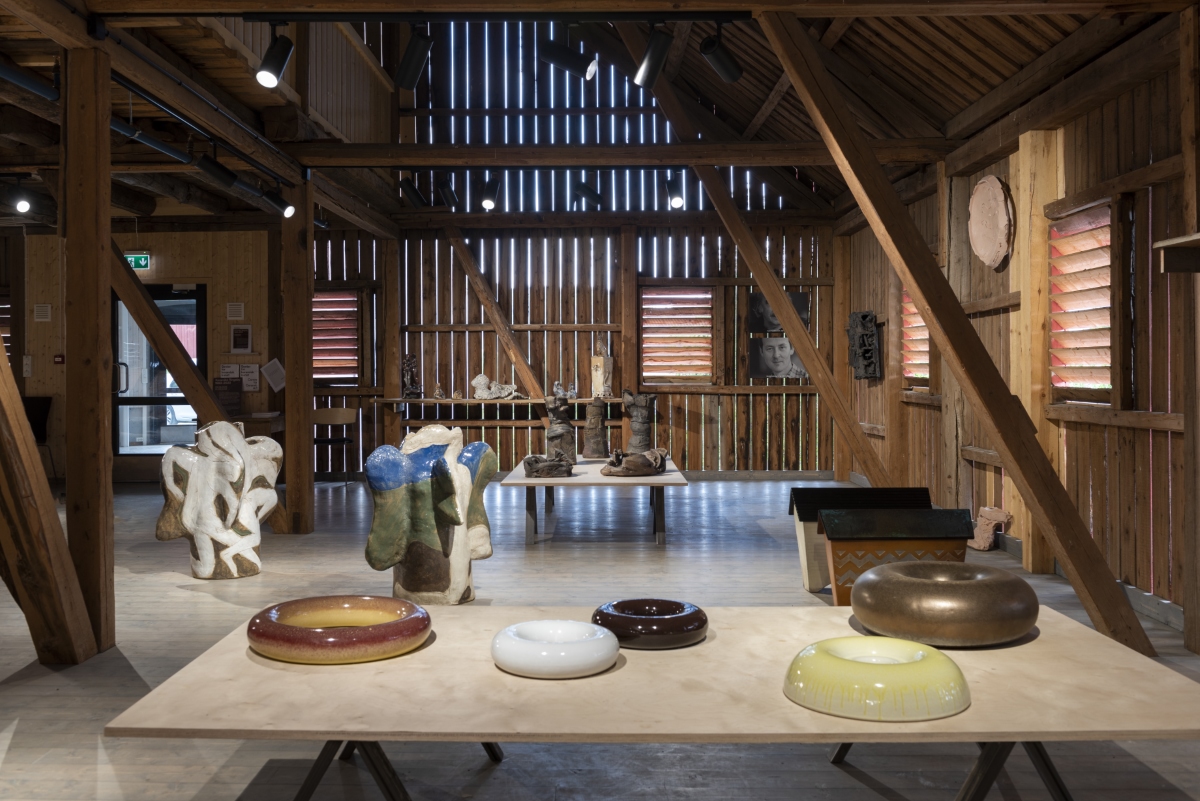


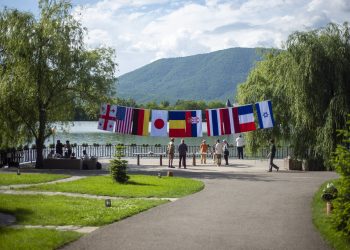
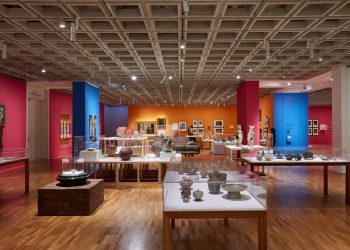
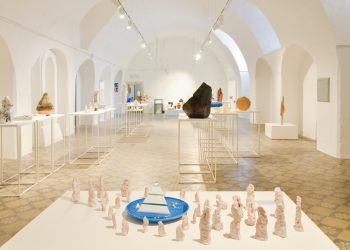





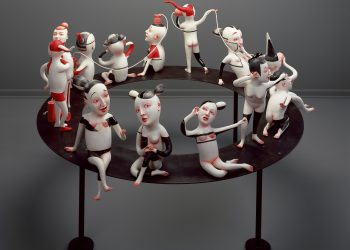




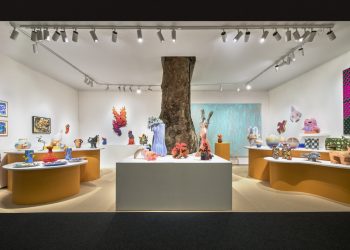
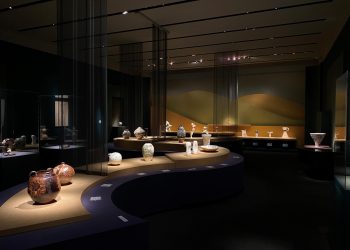
Exciting work…energetic and so good to see well displayed…spacious.
Thank you for this venue.